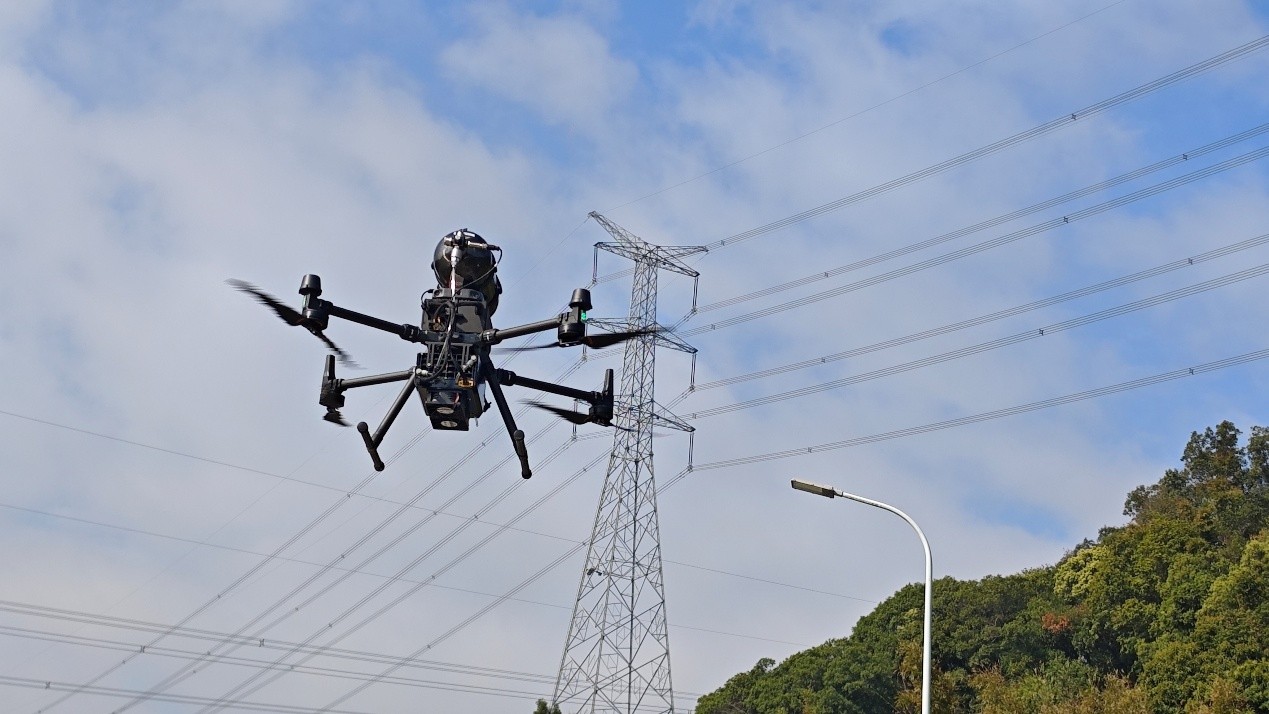
In May 2025, Hydrogen Craft won a 10 million yuan purchase order from a certain network. So far, the company has signed orders worth more than tens of millions of yuan, achieving 100% coverage of the two networks and building a trillion-level low-altitude industrial hydrogen future!
From the initial emergence of the concept of "low-altitude economy" in 2010 to its full outbreak in 2025, the low-altitude economy has accelerated its rise and become an important engine of China's economic growth. Its status has gradually developed from the economic level to the national strategic layout level.
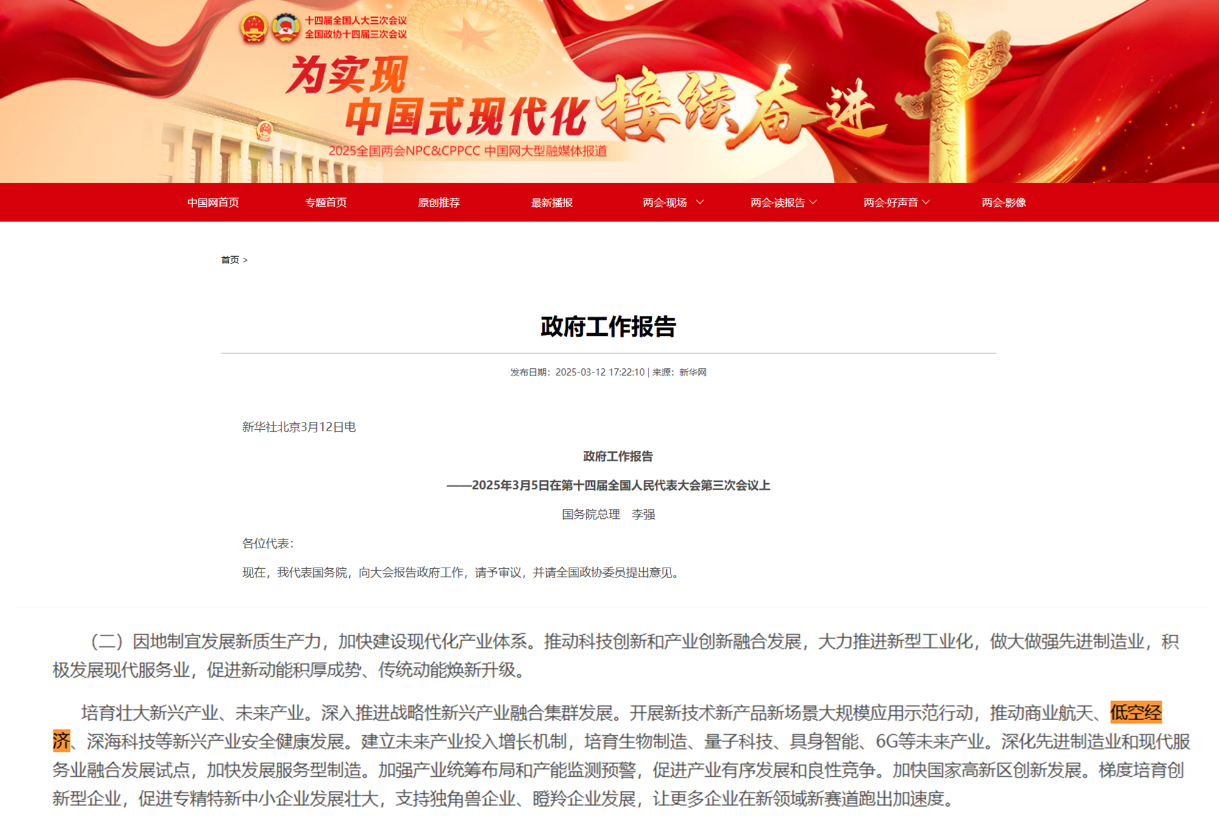
Excerpts from the 2025 Government Work Report
According to the forecast of the Civil Aviation Administration of China, the market size of my country's low-altitude economy will reach 1.5 trillion yuan in 2025, and is expected to reach 3.5 trillion yuan by 2035. In the 2024 and 2025 "Government Work Reports", the low-altitude economy has been mentioned as one of the future development priorities for two consecutive years.
As the core carrier of the low-altitude economy, drones have become a key link in the low-altitude industrial ecology, and have played a huge role in ground-air collaborative operations in industry scenarios. According to institutional statistics, the market size of hydrogen-powered drones is expected to exceed 2.14 billion yuan in 2027 and reach 14.13 billion yuan in 2030.
In various industry-level low-altitude operation scenarios, the endurance of drones is a common focus. Low-altitude scenarios such as power inspection, emergency rescue, logistics and transportation, urban management, surveying and exploration all require drones to achieve long-term aerial operations or hovering. As the most widely used power system for drones, lithium batteries have obvious limitations in terms of endurance due to their technical characteristics. The flight time of fixed-wing drones is about 1~2 hours, and the flight time of multi-rotor drones is about 20~40 minutes, which can only meet the needs of short-range flights. Therefore, finding a new power system that is environmentally friendly and can provide drones with longer flight time is a key problem that must be overcome in the future development of industry-level drones.
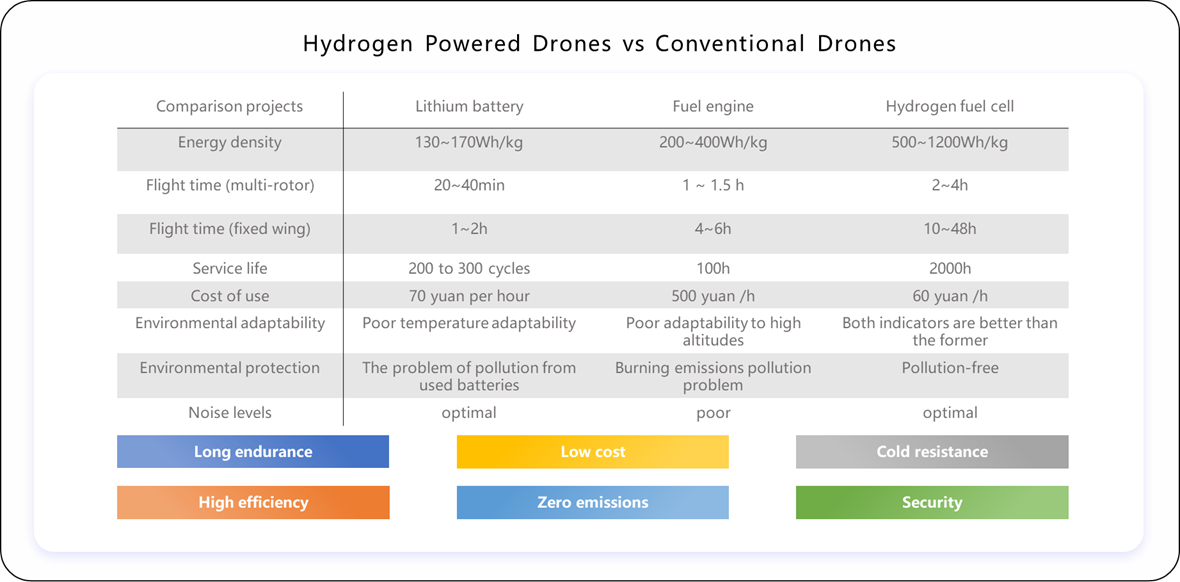
With the breakthrough of key hydrogen energy technologies and the promotion of demonstration projects, hydrogen fuel cells have gradually entered the public eye. They have become an excellent choice for new power systems for drones because of their energy density exceeding that of fuel engines, their ability to extend the flight time to more than three times that of lithium batteries, their stable operation in low-temperature environments, their ability to quickly replenish energy and replace it immediately, and their net zero carbon emissions. At present, key progress has been made in the industry application of hydrogen-powered drones.
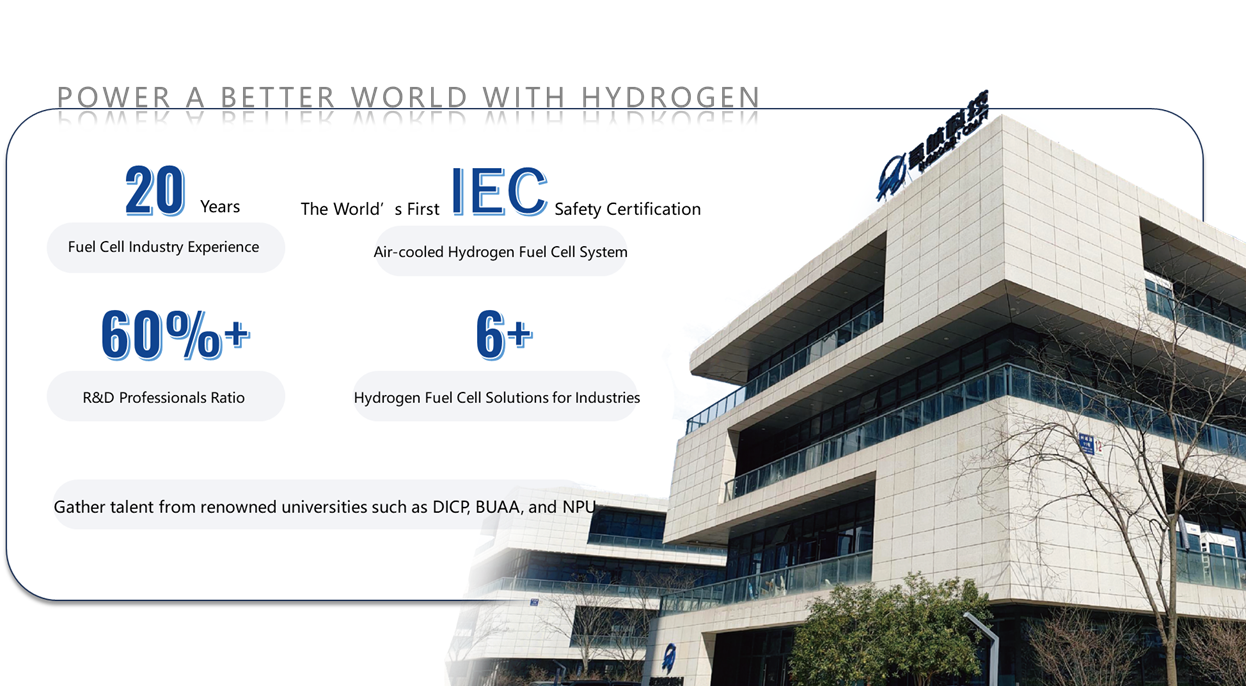
Zhejiang Hydrogen Craft is a high-tech enterprise focusing on the development and application of lightweight and highly adaptable fuel cells. It has 20 years of experience in the fuel cell industry. Its independently developed air-cooled hydrogen fuel cell has won the world's first IEC safety certification from the German Rhine. It has reached strategic cooperation with leading drone companies such as DJI, Chengzhi Intelligent, and Diamond Aircraft, and launched core products such as the FC30 hydrogen-electric version of the carrier drone, DJI M350 hydrogen-electric version of the drone, hydrogen-electric version of the tethered lighting drone, and Hydrogen Spin 4.
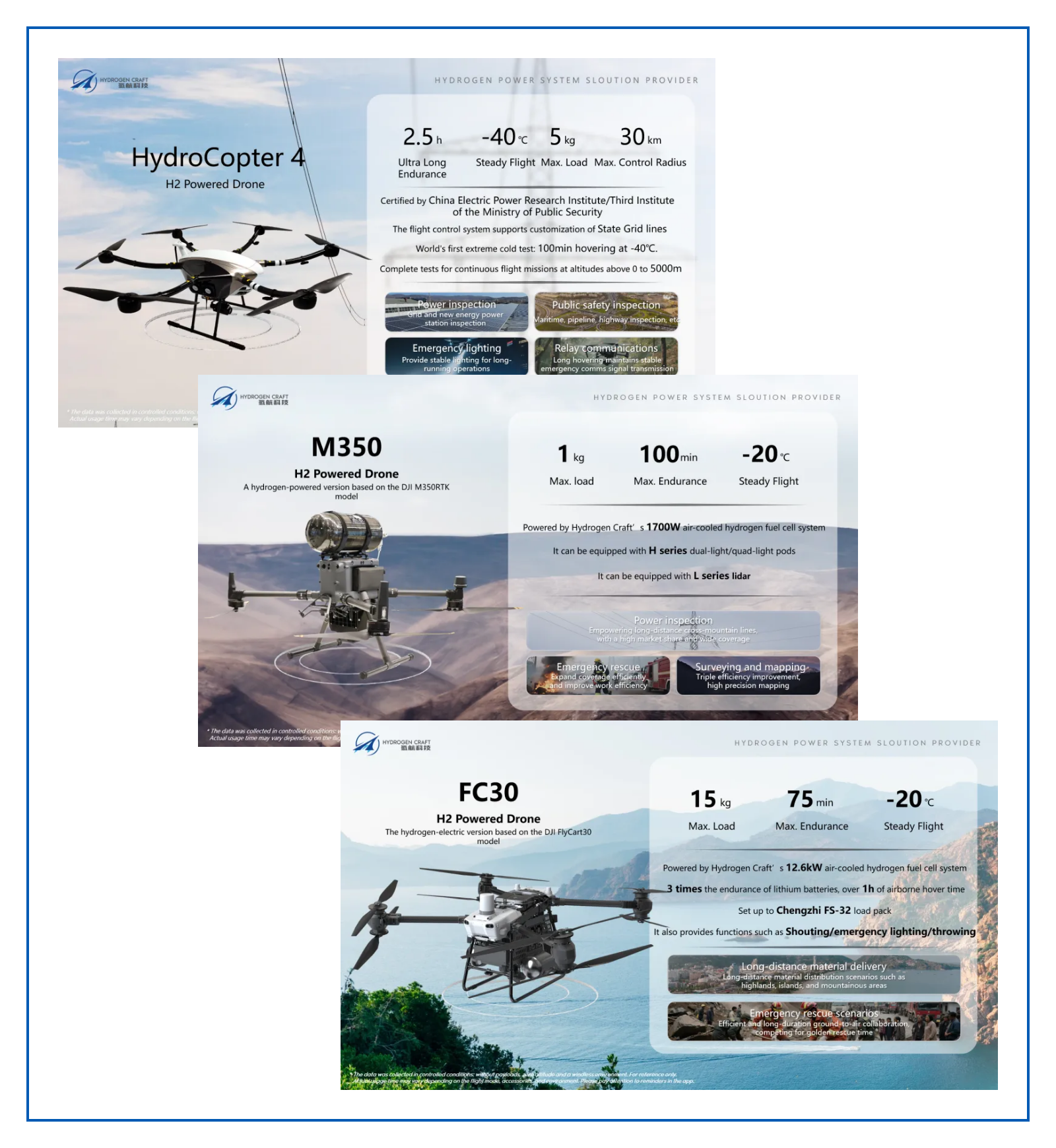
In May this year, the M350 hydrogen-electric version of the drone won a 10 million yuan purchase order from a certain network. It will be mainly used for refined inspections of power grids. A single bottle of hydrogen can meet 80 minutes of aerial flight operations, an increase of 270% compared to lithium-ion drones. The single-flight endurance is extended from the original 30 kilometers to 70 kilometers of line inspections, and the daily operating area is equivalent to that of 20 people patrolling the lines.
Up to now, Hydrogen Craft has signed contracts worth more than tens of millions of yuan in total. Hydrogen-powered drones will play a huge role in power inspection, emergency rescue, air transportation, surveying and exploration, and other fields.
Hydrogen Craft has built a mass production line for air-cooled hydrogen fuel cells in Shanghai, which can produce 20,000 kilowatts of fuel cells each year, enough to meet the mass production and shipment of 8,000 sets of hydrogen-powered drones.
—— Liu Haili, Chairman of Hydron Technology
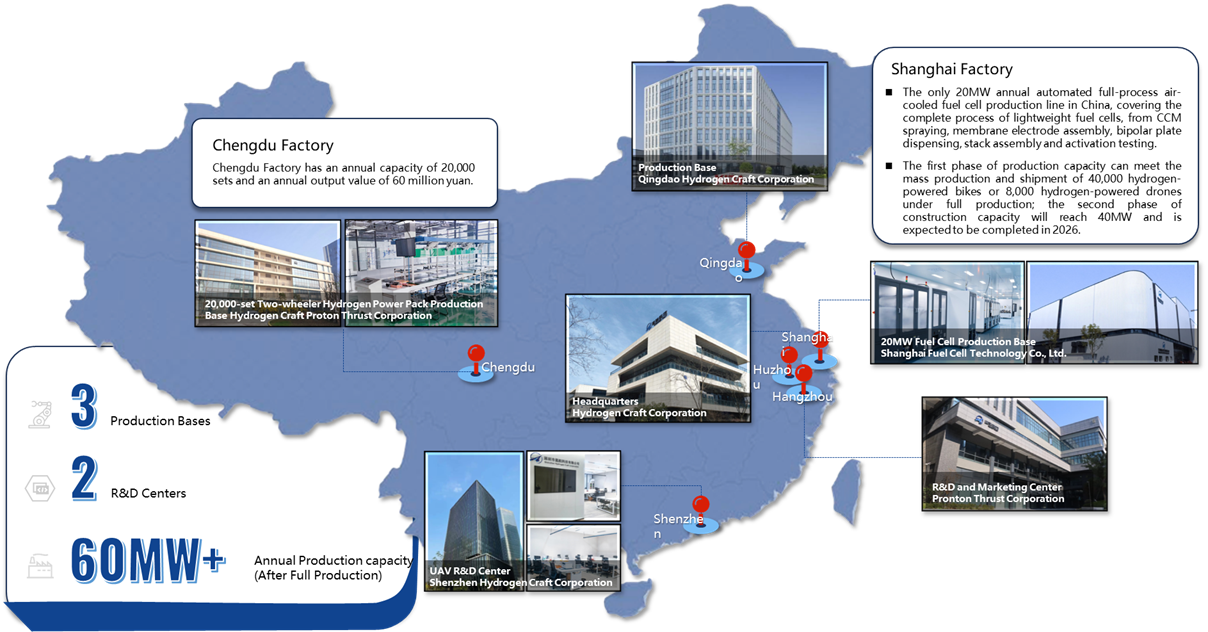
Low-altitude blue ocean, hydrogen-powered future. The future development of hydrogen-powered drones still needs more pathfinders to join. Hydrogen Craft looks forward to working side by side with outstanding companies in the industry to create unlimited possibilities in the hydrogen-powered era of drones!